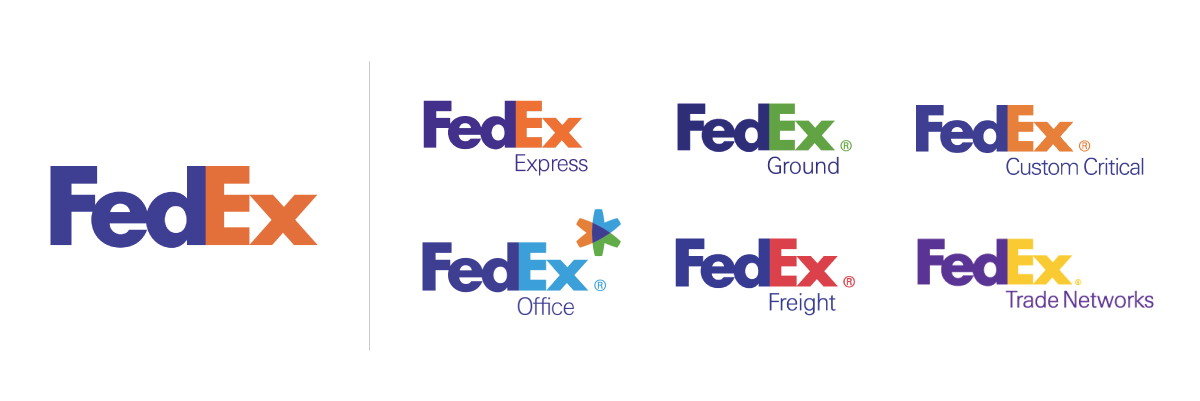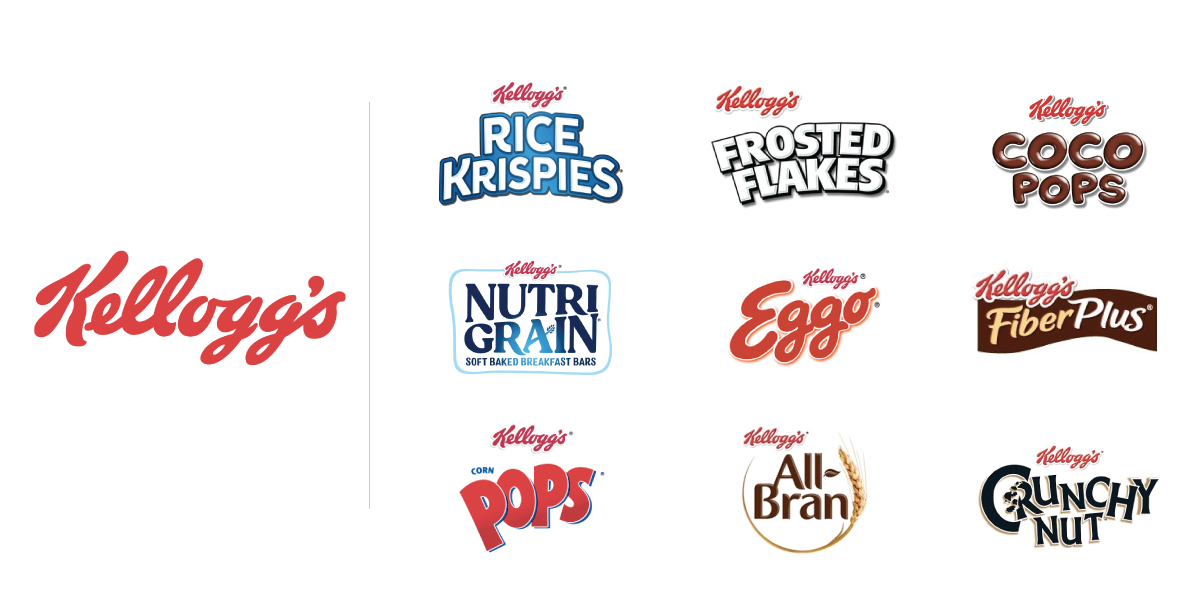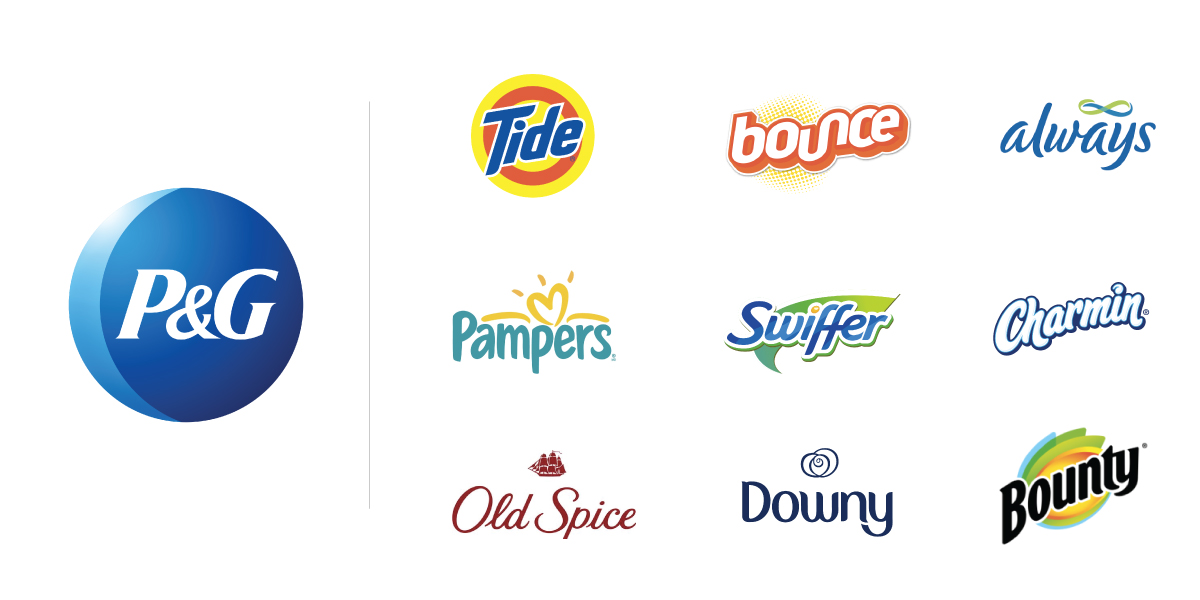
Brand Architecture is a system that organizes sub-brands within a company. Companies have an umbrella brand, which is the top brand of the company as a whole. Any products that are developed under that company gets a separate sub-brand to represent that product itself. There are several ways to handle multiple sub-brands by either keeping some design elements in tack so you can see the relationship to its umbrella brand or even making free-standing sub-brands that look completely different and stand on their own.
A branded house structure is where the umbrella brand and sub-brands are tightly related to one another. Where sub-brands take the same design elements from their main brand to keep a visual connection and the only difference can be color or naming. FedEx for example keeps its main logo intact but changes the sub-brand naming and color combinations.

Where a company has other sub-brands that are connected by name or icon, but the overall look can be different. This allows the sub-brand to be more flexible in overall appearance while still having the benefits of the main brand endorsement. For example, Kellogg’s is an umbrella brand with different cereal brands below them with different looks but uses the main Kellogg’s logo as an endorsement.

Where an umbrella brand and sub-brands are completely different and independent from each other. For example, Procter & Gamble’s has many brands that are individual, and the main company is given little prominence.

The benefits of brand architecture are having control of the overall branding and imagery of your company. You can also build trust in your umbrella company name and when developing sub-products consumers already have an idea of what to expect. Brand architecture can also establish how your company’s sub-brands get designed in the future making it easier and organized. Creating a visual language that people can recognize quickly.